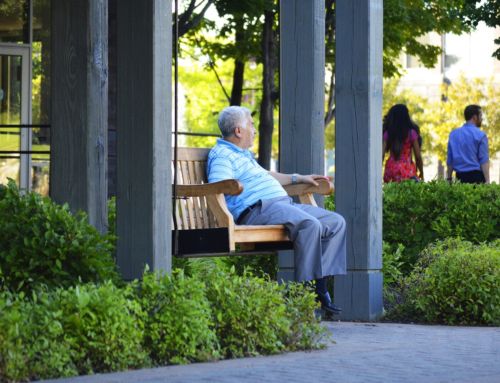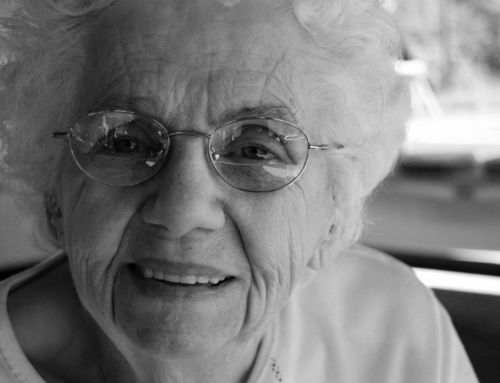The 50+ population is especially affected by COVID-19, in Europe as across the World. SHARE therefore fielded a special data collection during the outbreak, to examine in-depth how members of this risk group cope with the health-related and socioeconomic impact. This article describes how the special study was set up, including adaptations to the mode of data collection and fieldwork procedures which the pandemic necessitated.
Introduction
COVID-19 has been affecting our health, economy, politics, and social life, and is especially disrupting for the target group of the Survey of Health, Ageing and Retirement in Europe (SHARE): the 50+ population, including people in retirement or nursing homes who have the greatest risk on their health from being infected. The outbreak of COVID-19 hit SHARE in the middle of its Wave 8 data collection: in March 2020, the fieldwork in all 28 countries, which had started in October 2019, was gradually suspended country by country. Against this background, all stakeholders involved shared the opinion that SHARE data about the health and living situation of the 50+ population in Europe were now needed more than ever to shed light on the short- and long-term implications of the pandemic. They also agreed that this should be done in two ways. First, SHARE provides as it is an ideal infrastructure to put the consequences of COVID-19 in its proper context. SHARE’s strength is to determine the impact of the pandemic on living conditions that have been routinely recorded: labour market status, income, family and social contacts, inter- and intra-generational help, differentiated by the three age groups in SHARE (still working, young retirees, oldest old). This enables researchers for instance to trace whether the negative economic, social, and health effects of the pandemic are hitting those who were anyway disadvantaged. Second, this wealth of life-course data should be complemented by measurements of the current situation, especially during the lockdown. This led to the development of the SHARE COVID-19 survey.
Adaptation of data collection mode
After fieldwork was suspended, it soon became clear that a quick return to the normal face-to-face Computer Assisted Personal Interview (CAPI) was unlikely. After careful considerations of the feasibility of different alternatives for SHARE’s target population and the aim of the new SHARE COVID-19 questionnaire, it was decided that SHARE would resume interviewing with a Computer Assisted Telephone Interview (CATI), collecting data on the same topics as in the regular SHARE questionnaire but shortened and targeted to the COVID-19 living situation of people who are 50 years and older. Other alternatives, such as a Computer Assisted Web Interview (CAWI) or a Paper-And-Pencil Interview (PAPI) were disregarded in the end due to the following reasons: First and foremost, both CAWI and PAPI would imply huge operational and methodological consequences for SHARE, since an interviewer-administered questionnaire would be changed into a self-administered questionnaire. Other studies have shown that mode effects on response behaviour and measurement error tend to be larger between interviewer- and self-administered modes than between modes that are both interviewer-administered such as CAPI and CATI (e.g. Couper, 2011; De Leeuw, 2018; Jäckle, Roberts, & Lynn, 2010).
In addition, a short-term change to web interviewing was rejected due to the variation in internet use across countries and especially across age groups in SHARE. Even in countries like Sweden and Denmark, where respondents between 50 and 69 years of age reported high rates of internet usage, those aged 70 and over – especially the 80+ year-olds – reported a much lower rate of usage. (More detailed analyses based on SHARE Wave 6 data are available upon request.) These groups are, however, very important target groups in an ageing study like SHARE and should certainly be included in this special study about COVID-19.
Further, a switch to PAPI was also seen as infeasible because in some of the SHARE countries with severe lockdowns postal delivery was (and at the time of writing still is) not possible. Moreover, collecting data in this mode would require respondents to leave their home to post the completed mail questionnaire, or the interviewer to collect it from them at home. During the COVID-19 crisis this could pose a serious risk to elderly respondents and/or interviewers. Also, the data handling is much more difficult and error-prone with PAPI.
In contrast, when using CATI, some of the existing SHARE software tools could be more easily adapted. As these tools were already installed on the interviewers’ laptops at the start of Wave 8, interviewers can continue using them by telephone. The most crucial change was that the newly developed SHARE COVID-19 questionnaire had to be programmed anew, translated into the 40 SHARE languages, tested, and distributed to the interviewers. For this, an online survey tool connecting the SHARE COVID-19 questionnaire with the SHARE case management system on the interviewer laptops was used.
New questionnaire content covering the impact of COVID-19
As a reaction to the seriousness of the COVID-19 outbreak and the prolonged lockdowns, a special SHARE COVID-19 questionnaire was developed. This new questionnaire covers the most important life domains for the target population and asks specific questions about infections and changes in life during the lockdown:
- Health and health behaviour: General health before and after the COVID-19 outbreak, practice of safety measures (e.g. social distancing, wearing a mask)
- Mental health: Anxiety, depression, sleeping problems, and loneliness before and after the COVID-19 outbreak
- Infections and healthcare: COVID-19 related symptoms, SARS-CoV-2 testing and hospitalization, forgone medical treatment, satisfaction with treatments
- Changes in work and economic situation: Unemployment, business closures, working from home, changes in working hours and income, financial support
- Social networks: Changes in personal contacts with family and friends, help given and received, personal care given and received.
Adaptation of sample design
For the new CATI instrument on the COVID-19 outbreak, a sample was selected in each country that includes 1) panel members who had not been interviewed before the suspension of fieldwork and 2) panel members who had already been interviewed face-to-face in Wave 8. In some countries a stratified sample based on region of all panel households had to be selected due to cost reasons, but in most countries the whole longitudinal sample could be fielded (overall, more than 80,000 eligible respondents). Both respondent groups receive the same questionnaire; the only difference is that the panel members who had not been interviewed face-to-face in Wave 8 were asked questions on changes in the household composition since their last interview, while respondents who had already been asked in Wave 8 did not have to answer these questions again.
Re-interviewing offers the possibility to substantively explore changes in the respondents’ social networks and health behaviour due to the COVID-19 crisis, their self-rated (mental) health, or of their economic situation. In addition, the selection of already/not yet interviewed panel members allows methodological research about effects on (non-)response, measurement error, and survey/fieldwork costs regarding the SHARE COVID-19 questionnaire, which is the basis for reliable empirical results in our field and is particularly important when changing interview mode. In this respect, repeatedly measuring health, for example, in the regular SHARE interview (and thus before the COVID-19 outbreak) and with the SHARE COVID-19 questionnaire (i.e. during/after the COVID-19 crisis) enables several interesting comparisons of the measurement methods, which can help validate the information provided by the respondents.
Other than the longitudinal sample, the recruitment of the Wave 8 refreshment samples was not continued after the suspension, nor were any of the already-recruited refreshment sample members be re-interviewed. The reason for this choice was that, firstly, telephone numbers are unavailable for most refreshment sample households, with exceptions in a few (Scandinavian) countries. In contrast, the telephone numbers of the longitudinal panel sample members have been collected in previous panel waves already. Secondly, the exceptional value of collecting COVID-19 data in SHARE lies in the merging of these new data with what we already know about the life histories of the panel respondents from previous waves.
In contrast to many other cross-national studies, SHARE includes persons living in nursing homes. It was decided that these panel members should also be asked to participate in the SHARE COVID-19 survey. However, interviewers were instructed to avoid pressing refusal conversion attempts among nursing home respondents, or on the caretaker or staff members of the nursing home if they are hesitant to allow the interview. This was considered ethically undesirable regarding the burden that the COVID-19 outbreak puts on nursing home staff and inhabitants.
Adaptation of fieldwork design aspects
To prepare the change from CAPI to CATI fieldwork, several aspects of the normal SHARE fieldwork design, also including amendments to the existing contracts, had to be adapted. However, SHARE’s principle of providing the same software tools and programmed questionnaire to all survey agencies in order to harmonize and standardize fieldwork and monitoring (see Börsch-Supan et al., 2013) was also followed for the CATI. Survey agencies were asked to send a new advance letter to the Wave 8 panel members, even if they had already sent one before the suspension. The new advance letter announced the telephone interview and included the standard SHARE data protection statement as well as a reply card that respondents could use to update their telephone number if needed. A condensed read-out version of the data protection statement was prepared for countries where postal services may not work properly.
Survey agencies were also asked to include a monetary incentive in the advance letter when possible. Prepaid unconditional incentives have been shown to be the most effective way of increasing response rates (e.g. Medway & Tourangeau, 2015; Mercer, Caporaso, Cantor, & Townsend, 2015; Singer & Ye, 2013) and could in this case be justified to the respondent as being the simplest (or even only) way to transfer the incentive to them. In countries where sending money by post was not allowed or possible, a link to a gift voucher or other gift was to be used. Further, SHARE demanded that survey agencies would employ in the CATI fieldwork only interviewers who had received general interviewer training as well as the SHARE-specific interviewer training at the start of Wave 8. In addition, all interviewers working in the CATI fieldwork received an additional CATI training with the new SHARE COVID-19 survey via webinars (e.g. to train them entering a remark when the cause of death was COVID-19). This national interviewer training was preceded by Train-the-Trainer (TTT) webinars for the survey agency staff, centrally conducted by the SHARE Central coordination team.
Next waves of SHARE
The special SHARE COVID-19 questionnaire over the phone is carried out in 27 European countries and Israel from June until August 2020. Plans are currently being developed to have a second round of the SHARE COVID-19 Survey mid-2021, with the exact months depending on the development of the pandemic. All respondents of the first round would then be re-interviewed. The second round survey will contain similar questions as the first round. However, it will refer to fall 2020 through spring 2021 and therefore cover the effects of a potential second wave of the pandemic and the longer-run social and economic effects of the epidemic control measures. This will for example allow to compare how the high-risk group of older respondents coped with the crisis, how the national healthcare and social systems responded to the pandemic, and which lessons for the future should be drawn from the very different political reactions of the SHARE countries towards the pandemic.
Furthermore, the normal data collection using the panel core questionnaire will also be resumed again in 2021. Whether the risks for the vulnerable SHARE target population in all countries will allow the use of face-to-face interviews again remains to be seen. Earlier-developed plans to move SHARE gradually towards new and mixed ways of data collection might have to be accelerated as a consequence of the pandemic.
The normal core panel data collection provides pre-post data on living conditions of the 50+ population in Europe. This allows the estimation of stability and change of these conditions as a consequence of the pandemic, as well as the comparison of this crisis’ socio-economic impact with previous hardships, for example the economic crisis in 2008. Therefore, the greatest strength of SHARE is the enrichment of the newly collected data on COVID-19 with the extensive background information about the panel members and their response behaviour in previous SHARE waves. This combination of data offers huge potential for substantive analyses and cross-national comparisons regarding health, social, and economic developments and outcomes. In this respect, SHARE can add important insights to recent clinical studies, which primarily focus on the prevalence, incidence, and case fatality rates but are purely medical and frequently restricted to the national level. The COVID-19 pandemic and its ensuing economic crisis provide an example of how important it is to collect multidisciplinary and internationally comparable data to support evidence-based policy-making, especially targeting health- and employment-related policies – a central aim of SHARE.
References
- Börsch-Supan, A., Brandt, M., Hunkler, C., Kneip, T., Korbmacher, J., Malter, F., Schaan, B., Stuck, S., & Zuber, S. (2013). Data resource profile: The Survey of Health, Ageing and Retirement in Europe (SHARE). International Journal of Epidemiology, 42(4), 992-1001.
- Couper, M. P. (2011). The future of modes of data collection. Public Opinion Quarterly, 75(5), 889-908.
- De Leeuw, E. D. (2018). Mixed-mode: Past, present, and future. Survey Research Methods, 12(2), 75-89.
- Jäckle, A., Roberts, C., & Lynn, P. (2010). Assessing the effect of data collection mode on measurement. International Statistical Review, 78(1), 3-20.
- Medway, R. L., & Tourangeau, R. (2015). Response quality in telephone surveys: Do prepaid cash incentives make a difference? Public Opinion Quarterly, 79(2), 524-543.
- Mercer, A., Caporaso, A., Cantor, D., & Townsend, R. (2015). How much gets you how much? Monetary incentives and response rates in household surveys. Public Opinion Quarterly, 79(1), 105-129.
- Singer, E., & Ye, C. (2013). The use and effects of incentives in surveys. The ANNALS of the American Academy of Political and Social Science, 645(1), 112-141.
This article is based on:
Scherpenzeel, A., Axt, K., Bergmann, M., Douhou, S., Oepen, A., Sand, G., Schuller, K., Stuck, S., Wagner, M., & Börsch-Supan, A. (2020). Collecting survey data among the 50+ population during the COVID-19 outbreak: The Survey of Health, Ageing and Retirement in Europe (SHARE). Survey Research Methods, 14(2), 217-221.
About the authors:
SHARE-ERIC Central Coordination Team
Munich Center for the Economics of Aging (MEA), Max Planck Institute for Social Law and Social Policy
represented by Annette Scherpenzeel, Kathrin Axt, Michael Bergmann, Salima Douhou, Andrea Oepen, Gregor Sand, Karin Schuller, Stephanie Stuck, Melanie Wagner and Axel Börsch-Supan.







Leave A Comment